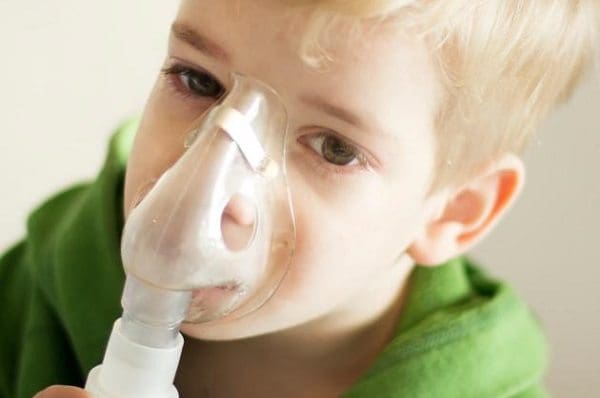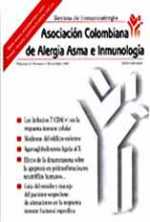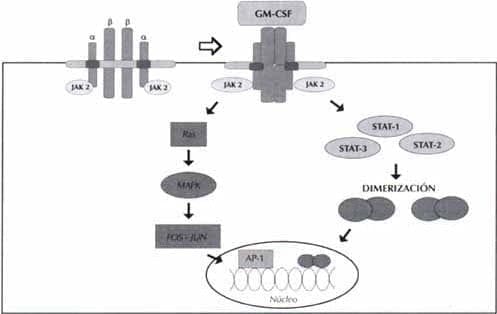El asma bronquial está clasificada como una enfermedad crónica que afecta individuos de todas las edades en todo el mundo (14,34). Su prevalencia varía de acuerdo con los factores de riesgo genético y ambientales. Por esta razón, los resultados de los estudios a nivel epidemiológico no pueden ser extrapolados a otros lugares diferentes del lugar donde se han realizado.
En Latinoamérica, algunos estudios han reportado una prevalencia alta de esta enfermedad en lugares donde el clima favorece la proliferación del ácaro (8,9). Sin embargo, aunque los estudios de prevalencia son indispensables para conocer el impacto y el comportamiento histórico de las enfermedades (14,74), en Colombia los estudios estadísticos sobre la frecuencia nacional de enfermedades alérgicas incluyendo el asma, han sido muy pocos (14).
Además, se ha observado que los padecimientos alérgicos son cada vez más frecuentes (1,10-14). Aproximadamente, la tercera parte de la población general presenta algún problema alérgico. Durante las dos últimas décadas del siglo pasado, la prevalencia de enfermedades alérgicas, especialmente del asma bronquial, aumentó considerablemente (14,74); no obstante, las causas de este aumento aún no se han esclarecido.
Prevalencia de asma bronquial
En la población cartagenera se realizó un estudio (entre octubre de 1989 y marzo de 1990) que mostró una prevalencia de asma bronquial de 8,8%.
La mayoría de los individuos asmáticos en el grupo de estudio (70%) eran menores de 15 años y no existió diferencia significativa en la distribución del sexo como lo demuestran otros estudios (9,11,75,76). Esta prevalencia fue mucho mayor a la de los datos reportados para otras ciudades de Latinoamérica (8,77-80).
Se ha sugerido que los factores genéticos, entre otros, deben considerarse para esclarecer estos datos; el hecho de que el 45% de los individuos asmáticos de ese estudio tuvieron historias familiares positivas para asma bronquial, confirma la tendencia familiar que ha mostrado esta enfermedad.
Por este y otros hallazgos, se cree que los factores genéticos juegan un papel importante en la prevalencia del asma (8).
Además, las características étnicas se han considerado como factores que influencian la prevalencia de esta entidad (8,81-84).
En cuanto a la mortalidad, un estudio realizado en Colombia reveló que en el período comprendido entre 1974 y 1994, el asma bronquial fue la causa de 10.938 muertes. El estudio también demostró que las muertes por esta entidad son más frecuentes en zonas urbanas (77,3%) que en zonas rurales. Así mismo, las tasas de muerte más altas fueron encontradas en Antioquia, Valle y en la ciudad de Bogotá; estas 3 zonas geográficas representan cerca del 41,6% de la mortalidad por asma en el país (9).
Conclusión
Se han reportado muchas regiones cromosómicas ligadas al asma bronquial, pero aún no se han identificado los genes específicos.
Por lo tanto, la identificación de genes involucrados en el asma proporcionará una oportunidad para estudiar los procesos biológicos y obtener niveles de conocimiento mayores acerca de la etiología y fisiopatología de esta entidad.
Adicionalmente, una vez identificados los genes responsables de la susceptibilidad o de la enfermedad será posible estudiar los efectos de las exposiciones ambientales específicas sobre la potenciación o exacerbación de la expresión de la enfermedad.
Agradecimientos
Los autores expresan su gratitud a los Drs. Carlos J. Montoya y Julio C. Orrego por su interés y comentarios en la revisión de este artículo.
Referencias Bibliográficas
- WHO, NHLBI. Global strategy for asthma management and prevention. NHLBI/WHO. Workshop report: Global initiative for Asthma. Pub. NHLBI 1995;95:3659.
- Sheffer AL, Bailey WC, Bleecker ER. Guidelines for the diagnosis and management of asthma. J Allergy Clin Immunol 1991;88:425-534.
- Ober C. Do genetics play a role in the pathogenesis of asthma? J Allergy Clin Immunol 1998;101:S417-S420.
- Lemanske RF, Busse WW. Asthma. JAMA 1997;278:1855-1873.
- Martinez FD, Holberg CJ, Halonen M, Morgan WJ, Wright AL, Taussing LM. Evidence for mendelian inheretance of serum IgE levels in Hispanic and non -Hispanic white families. Am J Hum Genet 1994;55:555-565.
- Townley RG, Bewtra MD, Wilson AF. Segregation analysis of bronchial response to methacholine in families with and without asthma. J Allergy Clin Immunol 1986;77:101-107.
- Sandford A, Weir T, Pare P. The genetics of asthma. Am J Respir Crit Care Med 1996;153:1749-1765.
- Caraballo L, Cadavid A, Mendoza J. Prevalence of asthma in a tropical city of Colombia. Ann Allergy 1992;68:525-529.
- Vergara C, Caraballo L. Asthma mortality in Colombia. Ann Allergy Asthma Immunol 1998;80:55-60.
- Wurthrich B. Epidemiology and natural history of atopic dermatitis. Allergy Clin Immunol 1996;8:77-82.
- Burkholter D, Schiffer P. The epidemiology of atopic disease in Europe review. ACI News 1995;7:113-125.
- Blessing-Moore J. Editorial: asthma affects all age groups but requires special considerations in the paediatrics age group specially in children less than five years of age. J Asthma 1994;31:415-418.
- Endre L. Increasing frequency of chilhood asthma in Hungary and other countries. ACI Internat 1996;8/3:1-5.
- Dennis R, Caraballo L, García E, et al. Prevalencia de asma bronquial y otras enfermedades alérgicas en Colombia. Resultados preliminares en Santafé de Bogotá. Revista Colombiana de Neumología 1999;11:13-
- Blumenthal JB, Blumenthal MN. Immunogenetics of allergy and asthma. Immunol Allergy Clin North Am 1996;16:517-534.
- Sandforf AJ, Shirakawa T, Moffatt MF, et al. Localisation of atopy and beta subunit of high affinity gE receptor (Fcepsilon RI) on chromosome 11q. Lancet 1993;341:332-334.
- Daniels SE, Bhattacharyya S, James A, et al. A genome-wide search for cuantitative trait loci underlying asthma. Nature 1996;383:247-250.
- Morton NE. Linkage and association. In: Rao dC, Elston RC, Kuller LH, Feinteb M, Carter C, Havlik R, eds. Genetic epidemiology of coronary heart disease: past, present and future. 1 ed. New York: Alan Rliss, 1984:245-265.
- Snow RE, Chapman CJ, Holgate ST, Stevenson FK. Clonally related IgE an IgG4 transcripts in blood lymphocytes of patients with asthma reveal differing patterns of somatic mutation. Eur J Immunol 1998;28:3354-3361.
- Hopp R. Genetics of asthma. Allergy Asthma Mag 1998;7:20-23.
- Purdy M. New finding establishes genetic tie between allergy and asthma.1995; [online] available: https://www.hopkins.med.jhu.edu/NewsMedia/ press/19954
- Postma DS, Bleecker ER, Amelung PJ. Genetic susceptibility to asthma – bronchial hyperresponsiveness coinherited with a major gene for atopy. N Engl J Med 1995;333:894-900.
- Mendell NR, Blumenthal M, Amos DB, Yunis EJ, Elston RC. Ragweed sensivity: segretation analysis and linkage to HLA-B. Cytogenetic Cell Genet 1978;22:330-334.
- Young RP, Dekker JW, Wordsworth BP, et al. HLA-DR and HLA-DP genotypes and immunoglobulin E responses to common major allergens. Clin Exp Allergy 1994;24:431-439.
- Ober C. The genetic s of atopy. In: Barnes PJ, Grunstein MM, Leff L, Woolcock AJ, eds. Asthma. New York: Lippincott-Raven Publishers, 1997:129-144.
- Benessiano J, Crestani B, Mestari F, et al. High frequency of a deletion polymorphism of the angiotensin-coverting enzyme gene in asthma. J Allergy Clin Immunol 1997;99:53-57.
- Kay AB. Asthma and inflammation. J Allergy Clin Immunol 1991;87:893-910.
- Bonini S. Bronchial asthma: no more doubts. Allergy 1996;51:203-205.
- Holla L, Vasku A, Znojil V, Siskova L, Vacha J. Association of 3 gene polymorphisms with atopic diseases. J Allergy Clin Immunol 1999;103:702-708.
- Abbas A, Lichtman AH, Pober JS. Cellular and Molecular Immunology. 4 ed. Philadelphia: WB Sauders, 2000:424-444.
- Blumenthal MN. Family, twin and population studies of allergic responsiveness. In: Marsh DG, Lockhart A, Holgate ST, eds. the Genetics of Asthma. New York: Marcel Dekker, 1996.
- Sutton BJ, Gould HJ. The human IgE network. Nature 1993;366:421-428.
- Ferreira F, Ebner C, Kramer B, et al. Modulation of IgE reactivity of allergens by site-directed mutagenesis: potencial use of hipoallergenic variants for immunotherapy. Faseb J 1998;12:231-242.
- Ravetch JV. Atopy and Fc receptors: mutation is the message? Nature Genet 1994;7:117-118.
- Walley AJ, Cookson WO. Investigation of an interleukin -4 promoter polymorphism for associations with asthma and atopy. J Med Genet 1996;33:689-692.
- Cookson WO, Sharp PA, Faux JA, Hopking JM. Linkage between immunoglobulin E responses underlying asthma and rhinitis and chromosome 11q. Lancet 1989;1:1292-1295.
- Moffatt MF, Hill MR, Cornelis F, et al. Genetic linkage of T-cell receptor alpha/delta complex to specific IgE responses. Lancet 1994;343:1597-1600.
- Meyers DA, Postma DS, Panhuysen CIM. Evidence for a locus regulating total serum IgE levels maps to chromosome 5. Genomics 1994;23:464-470.
- Rosenwasser LJ. Interleukin-4 and the genetics of atopy. N Engl J Med 1997;337:1766-1767.
- The Colaborative Study on the Genetics of Asthma. A genome-wide search for asthma susceptibility loci in ethnically diverse populations. Nat Genet 1997;7:125-129.
- Hogde SE, Elston RC. Lods, Wrods an Mods: the interpretation of Lod scores calculated under different models. Genet Epidemiol 1994;11:329-342.
- Elston RC, Guo X, Williams LV. Two-stage global desings for linkage analysis using pairs of affected relatives. Genet Epidemiol 1996;13:535-558.
- Risch N, Merikangas K. The future of genetic studies of complex human disease. Science 1996;273:1516-1517.
- Krugglyak L, Lander ES. Complete multipoint sib-pair analysis of qualitative and quantitative traits. Am J Hum Genet 1995;57:439-454.
- Davis S, Schroeder M, Goldin LR, Weeks DE. Nonparametric simulation-based statistics for detecting linkage in general pedigrees. Am J Hum Genet 1996;58:867-880.
- Murray JC, Buetow KH, Donovan M. Linkage disequilibrium of plasminogen polymorphisms and assignment of the gene to human chromosome 6q26-6q27. Am J Hum Genet 1987;40:338-350.
- Campuzano V, Montermini L, Molto MD. Fridreich’s ataxia: autosomal recessive disease caused by an intronic GGA triplet repeat expansion. Science 1996;271:1423-1427.
- Laitinen T, Kauppi P, Ignatius J, et al. Genetic control of serum IgE levels and asthma: linkage disequilibrium studies in an isolated populations. Hum Mol Genet 1997;6:2069-2079.
- Thompson G. Mapping disease genes: family-based association studies. Am J Hum Genet 1995;57:487-498. 50.
- Ewens WJ, Spielman RS. The transmission/disequilibrium test: history, subdivision and admixture. Am J Hum Genet 1995;57:455-464.
- Spielman RS, Ewens WJ. The TDT and other family-based tests for linkage disequilibrium and association. Am J Hum Genet 1996;59:983-989.
- Chakraborty R, Weiss KM. Admixture as a tool for finding linked genes and detecting that difference from allelic association between loci. Proc Nati Acad Sci 1988;85:9119-9123.
- Stephens JC, Briscoe D, O’Brien SJ. Mapping by admixture linkage disequilibrium in human populations: limit and guidelines. Am J Hum Genet 1994;55:809-824.
- McKeigue PM. Mapping genes underlying ethnic differences in disease risk by linkage disequilibrium in recently admixed populations. Am J Hum Genet 1997;60:188-196.
- Bravo ML, Valenzuela YC, Arcos-Burgos M. Polimorphisms and phyletic relationships of the paisa community from antioquia (Colombia). Gene Geography 1996;10:11-17.
- Spielman RS, Mcginnis RE, Warren JE. Transmission test for linkage disequilibrium: the insulin gene region an insulin-dependent diabetes mellitus (DM). Am J Hum Genet 1993;52:506-516.
- Kaplan NL, Martin ER, Morris RW, Weir BS. Marker selection for the transmission/disequilibrium test, in recently admixed populations. Am J Hum Genet 1998;62:703-712.
- Pacek P, Sajantila A, Syanen AC. Detemination of allele frequencies at loci with length polymorphisms by quantitative analysis of DNA amplified from pooled samples. PCR Methods & Applic 1993;2:313-317.
- Shaw SH, Carrasuillo MM, Kashuk C, Puffenberger EG, Chakravarti A. Allele frequency distributions in pooled DNA samples; applications to mapping complex disease genes. Genome Research 1998;8:11-123.
- American Thoracic Society Commitee on Diagnostic Standars for non tuberculosis disease. Definitions and clasifications of chronic bronquitis, asthma and pulmonary emphysema. Am Rev Respir Dis 1962;85:756-768.
- Green SL, Gaillard C, Song E, Dewar JB, Halkas A. Polymorphisms of the beta chain of the high-affinity Immunoglobulin E receptor (Fcepsilon RI-Beta) in south african black and white and nonasthmatic individuals. Am J Respir Crit Care Med 1998;158:1487-1492.
- Jaffar Z, Roberts K, Pandit A, Linsley P, Djukanovic R, Holgate S. B7 Costimulation Is Required for IL-5 and IL-13 Secretion by bronchial biopsy tissue of atopic subjects in response to allergen stimulation. Am J Respir Cell Mol Biol 1999;20:153-162.
- Marsch DG, Neely JD, Breazeale DR. Linkage analysis of IL-4 and other chromosome 5q31.1 markers and totalserum immunoglobulin E concentrations. Science 1994;264:1152-1156.
- Xu J, Levitt RC, Panhuysen CIM. Evidence for a two unlinked loci regulating total serum IgE levels. Am J Hum Genet 1995;57:425-430.
- Shirakawa T, Li A, Dubowitz M, et al. Association between atopy and variants of the beta subunit of the high-affinity immunoglobulin E receptor. Nat Genet 1994;7:125-129.
- Shirakaga T, Morimoto K, Hashimoto T, Furuyama J, Yamamoto M, Takai S. Linkage between IgE responses underlying asthma and rhinitis (atopy) and chromosome 11q in Japanese families. Cytogenet Cell Genet 1991;58:1970-1971.
- Collée JM, ten Kate LP, de Vries HG. Allele sharing on chromosome 11q13 in sibs with asthma and atopy. Lancet 1993;342:936.
- Barnes KC, Neely JD, Duffy DL. Linkage of asthma and total serum IgE concentration to markers on chromosome 12q: evidence from Afro-Caribbean and Caucasian populations. Genomics 1996;37:41-50.
- Hill MR, Cookson WO. A new variant of the beta subunit of the high-affinity receptor for immunoglobulin E (Fc epsilon RI-beta E237G). Hum Mol Genet 1996;5:959-962.
- Cookson WO, Young RP, Sandord AJ, et al. Maternal inheritance of atopic IgE responsiveness on chromosome 11q. Lancet 1992;340:381-384.
- Moffatt MF, Sharp PA, Faux JA, Young RP, Cookson WO, Hpkin JM. Factors confounding genetic linkage between atopy and chromosome 11q. Clin Exp Allergy 1992;22:1046-1051.
- Stafford AN, Rider SH, Hopkin JM, Cookson WO, Monaco AP. A 2.8 Mb YAC conting in 11q12-q13 localizes candidate genes for atopy: Fc epsilon RI beta and CD20. Hum Mol Genet 1994;3:779-785.
- Laing IA, Goldblatt J, Eber E, et al. A polymorphism of the CC16 gene is associated with an increased risk of asthma. J Med Genet 1998;35:463-467.
- Woolcock A, Peat J. Evidence for increase of asthma worldwide. In: Chichester W, ed. The rising trends in asthma. 1 ed. Wiley: Ciba Foundation, 1997:122-136.
- Weiss K, Wagener D. Changing paterns of asthma mortality. Identifying target populations of high risk. JAMA 1990;264:1683-7.
- Sly RM. Mortality from asthma 1979-1984. Allergy Clin Immunol 1988;82:705-17.
- Schuhl JF, Da Silva A, Toletti M. The prevalence of asthma in schoolchildren in Montevideo (Uruguay). Allergol Immunopathol 1989;17:15-19.
- Crisci H. Asma bronquial Infantil. Alergia e Inmunología (Actas del VII Congreso Nacional de Alergia e Inmunología) Buenos Aires 1970;61:61-68.
- Perera JA, Fernandez J. Prevalencia del asma bronquial en el área de salud del policlínico “Luis AugustoTurcios Lima”. Rev Cuba Hig Epidemiol 1984;22:176-84.
- Lynch NR, Medouze L, Di Prisco MC. Incidence of atopic disease in a tropical enviroment: partial independence from intestinal helminthiasis. J Allergy Clin Immunol 1984;73:229-33.
- Sears MR. Epidemiology of asthma. In: O’Byrne P, ed. Asthma as an inflammatory disease. 1 ed. New York: Marcel Decker, 1990. p.15-48.
- Weitzman M, Gortmaker S, Sobol A. Racial, social and environmental risk for childhood asthma. Am J Dis Child 1990;11:1189-94.
- Gerstam BB, Bosco LA, Tomita DK. Prevalence and treatement of asthma in the Michigan medicaid patient population younger than 45 years, 1980-1986. J Allergy Clin Immunol 1989;83:1032-1039.
- Ohta T, Kimura M. Development of associative overdominance through linkage disequilibrium in finite populations. Genetical Research 1970;16:165-177.
CONGRESOS Y CURSOS
IV Congreso de Alergia e Inmunología
Universidad de Antioquia
Medellín 7-9 junio 2001
Informes: ricadona@col3.telecom.com.co
III Congreso Colombiano de Alergia,
Asma e Inmunología
Cartagena. 13-16 septiembre 2001
Informes: eegea@uninorte.edu.co






